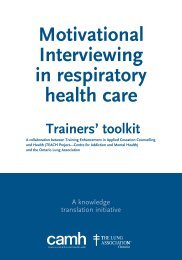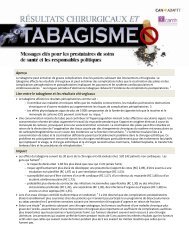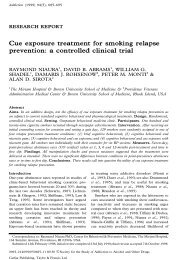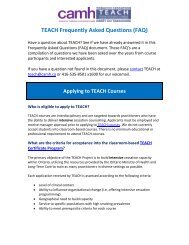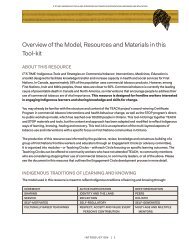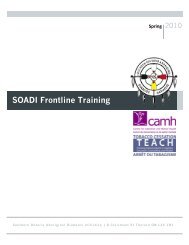Canadian Smoking Cessation Clinical Practice Guideline
Canadian Smoking Cessation Clinical Practice Guideline
Canadian Smoking Cessation Clinical Practice Guideline
You also want an ePaper? Increase the reach of your titles
YUMPU automatically turns print PDFs into web optimized ePapers that Google loves.
CANADIAN SMOKING CESSATION GUIDELINEGUIDELINE RATIONALE• INTRODUCTIONWhile approximately 17% of <strong>Canadian</strong>s are currentsmokers 1 , a large proportion have been shown to bewilling to make a quit attempt 2 . Health careproviders have an important role to play in assistingindividuals to quit smoking. Moreover, even briefinterventions by providers are known to be effectivein increasing the likelihood of a quit attempt by aperson who smokes 3 . <strong>Clinical</strong> practice guidelines areknown to be an important and effective provider toolto close the gap between recommended care andactual care provided 4 .The need for national clinical practice guidelines hasalso been identified by the World HealthOrganization’s Framework Convention for TobaccoControl (FCTC), which states that parties to the treaty“…shall develop and disseminate appropriate,comprehensive and integrated guidelines based onscientific evidence and best practice, taking intoaccount national circumstances and priorities, andshall take effective measures to promote cessation oftobacco use and adequate treatment for tobaccodependence” 5 .BACKGROUND OF CAN-ADAPTTIn May 2007, the Tobacco Control Program of HealthCanada assembled selected members of the tobaccocontrol community for a roundtable discussionpertaining to tobacco cessation guidelines. Thisroundtable of experts highlighted several issues andneeds, including:Traditional methods of guidelinedevelopment have relied on a narrow field ofevidence, focusing mainly on randomizedcontrolled trials (that typically fail to accountfor conditions and factors that influencetreatment)Need to approach guideline/guidancedevelopment with inter-professionalcollaboration that significantly contributesboth clinically practical and population levelperspectivesNeed to engage stakeholders in guidelinedevelopment and implementation processesNeed for effective vehicles of communicationand knowledge translation between thedifferent audiences and stakeholdersTo address these needs, the <strong>Canadian</strong> Action Networkfor the Advancement, Dissemination, and Adoption of<strong>Practice</strong>-informed Tobacco Treatment (CAN-ADAPTT) was established in 2008, with funding fromthe Drugs and Tobacco Initiatives Program of HealthCanada.INTRODUCTION 1




